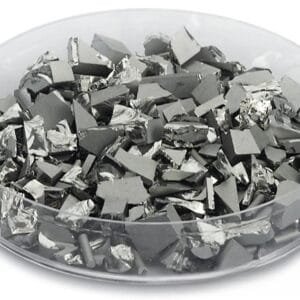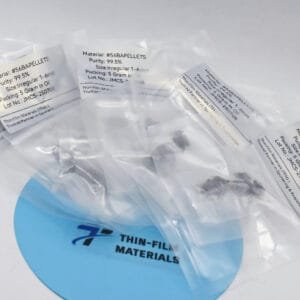Aluminum Silicon Copper Evaporation Materials
TFM provides high-purity aluminum silicon copper evaporation materials, which are alloys consisting of aluminum (Al), silicon (Si), and copper (Cu). These materials are essential for various deposition processes and offer versatility in applications.
Applications
- Deposition Processes: Ideal for semiconductor deposition, chemical vapor deposition (CVD), and physical vapor deposition (PVD).
- Optics: Utilized for wear protection, decorative coatings, and displays.
Packaging and Handling
We ensure that our aluminum silicon copper evaporation materials are meticulously handled to avoid damage during storage and transportation. This careful packaging preserves the quality and integrity of the products.
Our Offerings
TFM supplies a comprehensive range of evaporation materials, including:
- Pure Metals and Alloys: Various compositions and forms available.
- Ceramic Oxides: Including rare earth oxides like Sc2O3, Y2O3, La2O3, and other ceramics such as fluorides and nitrides.
- Forms: Tablets, granules, rods, and wires. Custom shapes and quantities are available upon request.
- Additional Components: Evaporation sources, boats, filaments, crucibles, heaters, and e-beam crucible liners.
For current pricing and availability of evaporation pellets and other deposition materials not listed, please contact us with your inquiry.

 MSDS File
MSDS File



Reviews
There are no reviews yet.